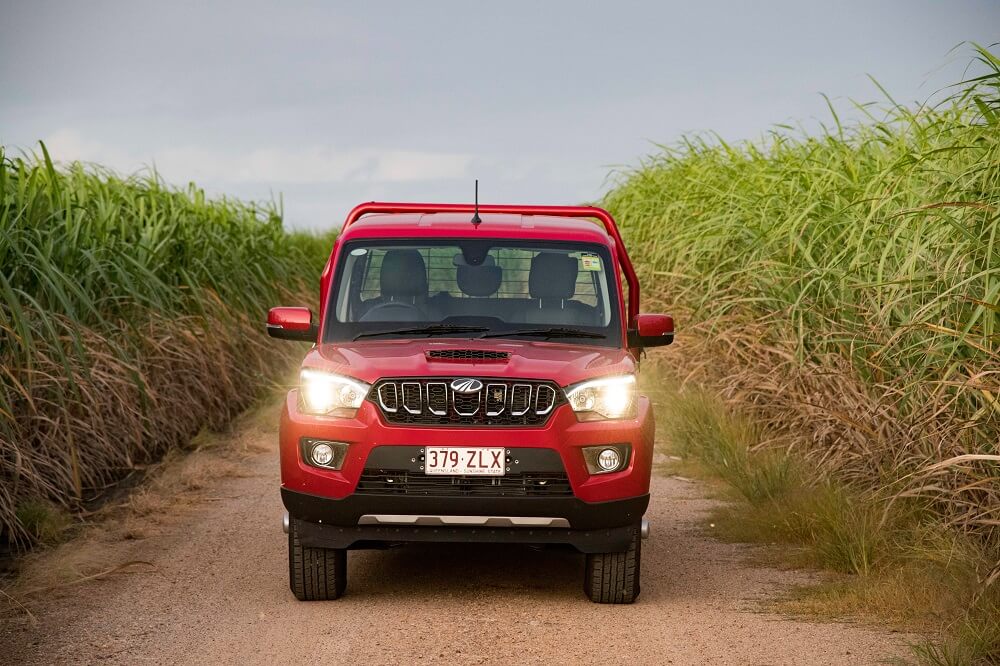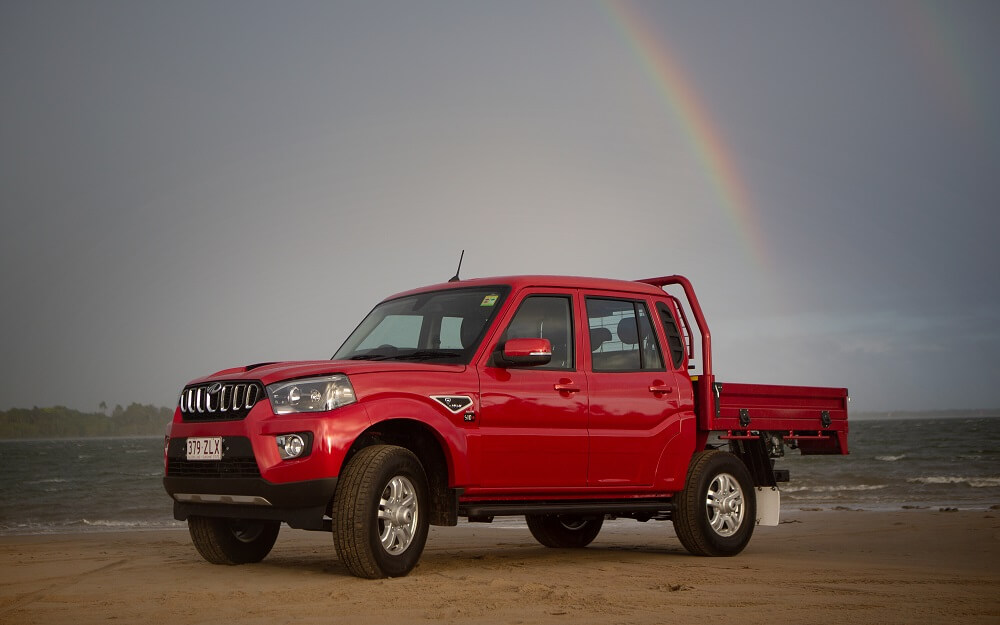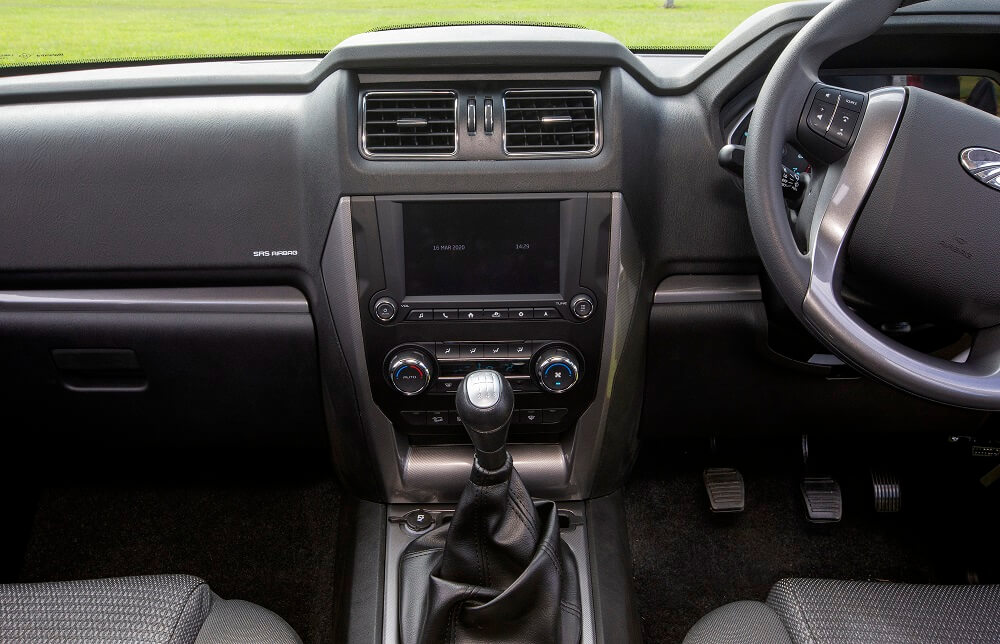Mahindra PikUp 4x4 S10+ Dual Cab review

A question asked often of motoring journalists is the inevitable, “what’s the best car you’ve ever driven?”
Despite having several decades to practise a response, it’s a question this scribe struggles with, as it’s akin to being asked to choose your favourite child.
The inverse, however, isn’t nearly so difficult, since the worst car I’ve ever driven is most definitely a Mahindra.
Not just any old Mahindra, but a crude Peugeot-diesel-powered knock-off of a World War II Willys Jeep that was briefly sold here in the early 1990s and was a truly awful machine everywhere except when ploughing across muddy paddocks.
Out on the road, its progress was characterised by a lamentable lack of speed, wayward handling and bits that fell off as you drove. Literally.
So you can imagine my trepidation when I was handed the opportunity to re-familiarise myself with Mahindra after a near 30-year hiatus, by way of a week-long test drive in the brand’s recently refreshed MY20 PiKup.
Despite the painful memories, first impressions of the new Mahindra were overwhelmingly positive; the open-top Jeep styling has long since been replaced by a more sophisticated dual cab pickup body, which if you squint a bit looks like a three-quarter-scale Toyota LandCruiser 79 Series.
Like the LandCruiser, the PikUp has a no-nonsense, workmanlike air about it, with slab-sides, an upright windscreen and a drop-side tray back affixed to its rear.
Unlike the circa $70k Toyota, however, the Mahindra rolls out of the showroom at the bargain basement price of just $32,990 drive away, including a factory well-side tub.
The model we drove stretched to a still-keen $37,500, with optional powder-coated galvanised steel tray and side steps.
Thankfully, the PikUp’s lustrous paint, 16-inch alloy wheels and splashes of chrome finish are a world away from its primitive predecessor, as is its interior fitout which, in place of a bare-metal dash has proper plastics, padding and even a pair of airbags.
Other safety features include electronic stability control (ESC), antilock brakes (ABS) and electronic brake distribution (EBD), but there’s an obvious lack of additional safety features such as rear seat airbags, lane departure warning and autonomous emergency braking.

Given the PikUp’s budget pricing it would be unreasonable to expect Japanese or Korean-quality interior plastics, and while the materials look hardy and durable, they’re coarse and exhibit a slight petro-chemical odour.
Despite this, the interior is not the bare-bones work environment the exterior might suggest, with carpeted floors, soft-touch fabric roof lining, and a well-laid-out dash with clear instrumentation.
Welcome nods to comfort and convenience include auto headlights and wipers, power mirrors, a USB port, two 12-V accessory sockets, plus climate and cruise control.
A 7.0-inch touchscreen plays a jaunty brand-signature tune and graphic on start-up, but more importantly offers Bluetooth connectivity, a reversing camera and controls for the audio and sat-nav system.
Its vertical orientation makes it difficult to read in certain light, however, and the icons are smaller and fiddlier than is ideal.
The multifunction steering wheel, with controls for audio and cruise, is adjustable for height but not reach, while the driving position is fairly upright.
Nonetheless, the fabric-covered bucket seats are comfortable and supportive, with fold-down armrests and height adjustment on the driver’s seat.
The fixed-bench is likewise comfy and supportive, with a fold-down centre armrest and two ISOFIX child seat mounts. Otherwise, there’s good head, foot and legroom, even if seated behind a taller driver.
Transmission options for the PikUp are manual only at present, which will limit its appeal, but Mahindra Australia says a six-speed automatic is due in mid-2021.
Thankfully, the long-throw six-speed is smooth and easy to operate, working harmoniously with a well-weighted clutch to deliver satisfyingly smooth take-up and shifts.
Beneath the bonnet is a 2.2-litre intercooled turbo diesel four-cylinder, boasting outputs of 103kW/320Nm.
It’s an impressively smooth and willing unit, achieving peak torque between 1500 and 2800rpm, so is flexible enough to be short-shifted, or to lug a tall gear from low revs without drama.

We never had a chance to test the dual-range part-time 4x4 system – operated via a switch on the centre console – with its choice of 2WD, 4WD high and 4WD low.
The latter is geared to give an impressively low overall reduction of 42:1, which along with 210mm of ground clearance, sharp approach and departure angles, hill descent control, and an Eaton mechanical locking rear diff lock, all point to strong off-road credentials.
The PikUp rides on a sturdy ladder-frame chassis, with a live axle and leaf springs at the rear, and an independent suspension with torsion beams up front.
As is to be expected for a work ute with a 1070kg payload and a 2500kg braked towing capacity, the unladen ride is pretty firm and the PikUp bucks and kicks over lumpy stuff, but its handling is otherwise safe and predictable.
The steering, which is decently weighted in the straight ahead, loads up in bends and during tight manoeuvres.
Despite brick-like aerodynamics, the PikUp hums along effortlessly at the speed limit, the tacho showing a smidge over 2000rpm at 100km/h in sixth.
You’ll need to find fifth at any hint of a hill, however, and overtaking manoeuvres are best approached judiciously.
The claimed combined cycle fuel consumption of 8.8L/100km is fairly respectable, although we achieved a slightly higher 9.8 over 400km of mixed urban and country driving.
Out back the PikUp features a sturdy galvanised steel tray with checker-plate base and drop-sides that make for easy loading.
There are handy tie-down bars on either side of the tray and a lightweight pressed metal roll bar behind the cab for further securing items.
It all seems pretty well screwed together and after a week at the wheel I came away with a new view of Mahindra and a genuine regard for this honest-as-the-day-is-long work ute.
Backed as it is by an excellent five-year warranty, with five-year roadside assist and a four-year capped price servicing deal, the Indian-manufactured ute is arguably the best value workhorse on the market today.
A sizeable drawback, however, is the lack of a current ANCAP crash safety rating.
Despite the PikUp having gained some additional safety features in the intervening years, it was last crash tested in 2016, when it achieved just three stars.
Key stats
- MLP: $32,990 (drive-away).
- Engine: 2.2-litre intercooled and turbocharged four-cylinder diesel.
- ANCAP safety rating: Three stars (2016).
- Tailpipe CO2 (g/km): 233g/km.
- For: Keen pricing, good warranty, rugged design, off-road ability.
- Against: Poor crash safety rating, lacks rear seat airbags and latest electronic safety aids, firm ride.
Related topics
Things to note
The information in this article has been prepared for general information purposes only and is not intended as legal advice or specific advice to any particular person. Any advice contained in the document is general advice, not intended as legal advice or professional advice and does not take into account any person’s particular circumstances. Before acting on anything based on this advice you should consider its appropriateness to you, having regard to your objectives and needs.
Insurance Products (excluding Travel Insurance) are issued by RACQ Insurance Limited ABN 50 009 704 152 (RACQI) and arranged by its agent, RACQ Distribution Services Pty Ltd (RDS) ABN 35 116 361 650, AFSL 567130 and RDS' authorised representatives (including RACQ Operations Pty Ltd ABN 80 009 663 414, AR No. 234978 (RACQO). Conditions, limits and exclusions apply. RDS and RACQO are in the RACQ group of companies. One of the companies in the RACQ group of companies has a minority shareholding in RACQI.
RDS and RACQO have not taken your personal objectives, circumstances or needs into account when preparing advice regarding insurance products and you will need to consider whether the advice is appropriate for you. Read the Product Disclosure Statement (PDS) and any applicable Supplementary PDS before making a purchase decision on this product. You can also access our Target Market Determinations on this website. RDS receives a commission from RACQI for the policies it arranges. RACQO receives fees paid for services it provides to RDS. Further details about remuneration are available on request prior to purchasing.
Banking and loan products issued by Members Banking Group Limited ABN 83 087 651 054 AFSL/Australian credit licence 241195 trading as RACQ Bank. Terms, conditions, fees, charges and lending policies apply. This is general advice only and may not be right for you. This information does not take your personal objectives, circumstances or needs into account. Read the disclosure documents for your selected product or service, including the Financial Services Guide and the Terms and Conditions, and consider if appropriate for you before deciding.
Except for RACQ Bank, any RACQ entity referred to on this page is not an authorised deposit-taking institution for the purposes of the Banking Act 1959 (Cth). That entity’s obligations do not represent deposits or other liabilities of RACQ Bank. RACQ Bank does not guarantee or otherwise provide assurance in respect of the obligations of that entity, unless noted otherwise.
RACQ Bank subscribes to the Customer Owned Banking Code of Practice which establishes higher standards than the law requires. The Code reflects modern consumer expectations and developments in approaches to issues such as consumer vulnerability, guarantors, and supporting customers through financial hardship. Please read our Customer Owned Banking Code of Practice page for more information.
RACQ Operations Pty Ltd (ABN 80 009 663 414 AR 000234978) and Members Travel Group Pty Ltd (ABN 45 144 538 803 AR 000432492) are acting as an Authorised Representative of the issuer of the insurance, Tokio Marine & Nichido Fire Insurance Co., Ltd. (ABN 80 000 438 291 AFSL 246 548). Any advice set out above is general in nature only, and does not take into account your objectives, financial situation or needs. Before purchasing any travel products, please consider the RACQ Travel Insurance Product Disclosure Statement (PDS) and the Target Market Determinations (TMDs) that apply to these products. Whilst the PDS outlines the Terms and Conditions of these products, the TMDs outline the intended class of customers that comprise the target market for these travel products. This will allow you to consider which products best suit your objectives, financial situation and needs and consider the products appropriateness to your personal circumstances. TMDs also outline matters involving the distribution and the review of these products. The PDS, Supplementary PDS and TMDs for each travel product can be found here.
